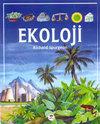Investigating Some Physical Properties of Composite Board, Produced from Sunflower Stalks, Designed Horizontally
Q3 Environmental Science
引用次数: 10
Abstract
The aim of this study was to investigate the usage possibilities of sunflower stalks in the manufacturing of alternative insulation board, which are left as waste (agro-fiber wastes), in the fields and are useless except for firing like a lot of agricultural wastes in Turkey and in the world every year. The sunflower stalks were designed horizontally to produce the board, and its physical properties were compared to the honeycombshaped composite board filled with kraft paper (Control board). Urea formaldehyde (UF) resin, Melamine Urea Formaldehyde (MUF) resin, and the D2 (PVA based) adhesives were employed for producing the composite boards. The physical properties [Chemical analysis, specific gravity, SEM, TGA, sound and heat insulations, ultrasonic pulse, LOI (limiting oxygen index), and combustion characteristics] of all the insulation boards were studied. The average specific gravity value, weight loss determined by TGA, heat insulation ratio, heat conductivity coefficient, sound insulation ratio, ultrasonic transmission speed value, LOI values (for the wooden part + core and wooden part), and weight loss ratio found by the combustion test were 0.29 g/cm3, 90.40%, 51%, 0.045 W/mK, 24.03%, 0.46 mm/μs, (28 and 30.5), and 91.72%, respectively. As a result, the composite insulation board was observed to be better than the control board since it presented a higher specific gravity value, higher insulation ratio, lower heat conductivity coefficient, higher sound insulation ratio, lower ultrasonic transmission speed value, and better combustion characteristics with respect to the control board.横向设计向日葵秸秆复合板的一些物理性能研究
本研究的目的是调查向日葵秸秆在制造替代绝缘板中的使用可能性,这些绝缘板作为废物(农业纤维废物)留在田地里,除了燃烧之外毫无用处,就像土耳其和世界上每年的许多农业废物一样。将向日葵茎秆水平设计制成该复合材料板,并与牛皮纸填充的蜂窝状复合板(控制板)进行物理性能比较。采用脲醛树脂(UF)、三聚氰胺脲醛树脂(MUF)和D2 (PVA基)胶粘剂制备复合板。研究了所有保温板的物理性能[化学分析、比重、SEM、TGA、隔音隔热、超声波脉冲、极限氧指数(LOI)和燃烧特性]。平均比重值、热失重、绝热比、导热系数、隔声比、超声波传速值、LOI值(木件+芯件和木件)和燃烧试验失重比分别为0.29 g/cm3、90.40%、51%、0.045 W/mK、24.03%、0.46 mm/μs、(28和30.5)和91.72%。结果表明,复合保温板比控制板具有更高的比重值、更高的保温比、更低的导热系数、更高的隔声比、更低的超声波传递速度值以及更好的燃烧特性。
本文章由计算机程序翻译,如有差异,请以英文原文为准。
求助全文
约1分钟内获得全文
求助全文
来源期刊

Ekoloji
环境科学-生态学
CiteScore
1.10
自引率
0.00%
发文量
0
审稿时长
>12 weeks
期刊介绍:
Cessation. Ekoloji is an international journal that focuses on papers that report results from original research on all disciplines engaged in the field of environmental research. We welcome articles that cover the entire spectrum of environmental problems and environmental pollutants, whether chemical, biological or physical. Its coverage extends to all environmentally related issues: air and water pollution, solid waste, noise, recycling, natural resources, ecology and environmental protection. It includes articles on basic and applied environmental pollution research, including environmental engineering and environmental health. All types of pollution are covered, including atmospheric pollutants, detergents, fertilizers, industrial effluents, metals, mining wastes, oil, pesticides, plastics, radioactive materials and sewage. It also includes research papers on ecological and environmental issues such as climate change, biodiversity. The primary criteria for publication are scientific quality and ecological/environmental significance.
The journal will be read and contributed to by biologists, applied ecologists, environmental scientists, natural resource specialists, environmental engineers, environmental health specialists, agro-ecologists, veterinaries, agricultural engineers, landscape planners and designers. The journal welcomes full "research papers" and short "research notes", only in the English language.
 求助内容:
求助内容: 应助结果提醒方式:
应助结果提醒方式:


